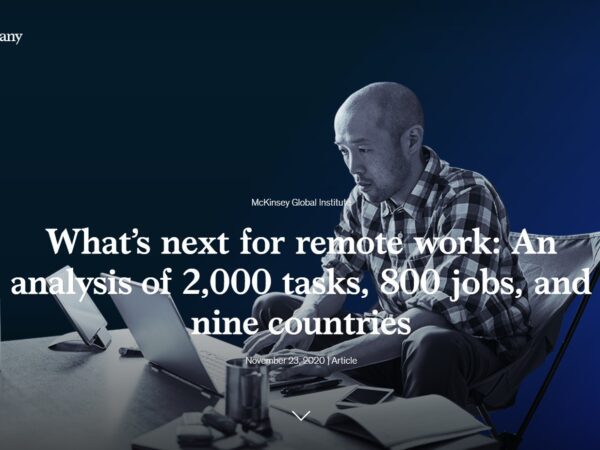In this article, we explore the business strategy of Outsourcing and the directions it is pivoting in, and then to lead into how Businesses and Service Providers can take advantage of innovations in this space to drive efficiencies in their operations as well as to take out costs from the bottomline.
What a Business would expect from an “Ideal” Outsourcing engagement
Outsourcing engagements can go well or not so well, but the following is the value proposition that a Business would look forward to from its Outsourcing Service Provider/ Partner:
- Bare minimum: Execute Outsourced activities/ functions as contracted, with the contracted quality & velocity, and at the right affordable costs, and most importantly, with the right flexibility.
- Be fully engaged with the Business team.
- Think from the Business team’s context (walking in their shoes !), and showcase your insights. Eg: Contribute as Subject Matter Experts — even without being asked. Look for opportunities to improve efficiencies and/ or reduce efforts and costs for the Business.
- Strategize, solution, & propose actions that can improve the standing of the Business organization within its’ Industry domain.
Key challenges in traditional Outsourcing
- Escalating Operational costs: Traditional IT & BPO Outsourcing destinations like India are seeing escalations in salary costs and real-estate costs, driving up Outsourcing costs & reducing the Cost arbitrage for Customers.
- Escalating Setup costs: As complexity of Outsourced work increases, and as Service Delivery SLAs become more stringent, the need to address this increasing complexity with more comprehensive support mechanisms is driving up Set-up costs for new outsourcing engagements.
- Demand for increased cost takeout: Economic pressures are forcing Businesses to push for more cost-effective alternatives for their contracted Service delivery.
- Access to high-technology skills & niche skills: Traditional Outsourcing vendor countries may have a limited population of high-technology & niche skills, due to limited market needs in those geographies. Hence supporting the requirements of Businesses specially for these skills may be challenging for Outsourcing vendors, specially within the cost constraints of Outsourcing contracts.
Other factors impacting the Outsourcing Service Providers’ ability to deliver “better than expectations”
- Time & Bandwidth of the Business team to engage with the Outsourcing Service providers.
- Mechanisms to enable & drive up engagement. This includes aspects such as rapport building & informal social networks creation.
- “Deliberate” mechanisms to infuse the operating style, rhythm, & culture of the Business organization into the Service provider team.
- Timezone differences impacting overlap time, and potentially impacting availability of “high-productivity” working times for both teams.
- The right incentives to the Service providers, to push them to break the mould.
Key advances enabling the evolution of Outsourcing
- Communications & Collaboration improvements leveraging IP Telephony & Internet-based Audio/ Video conferencing, File sharing, Whiteboarding, etc have significantly enhanced the capabilities of Remote Service delivery, by improving connectivity of resources & driving up team engagement, while cutting costs.
- Online Freelancing: The birth and growth of various Online Freelancing platforms is enabling small and medium businesses to leverage freelancing to execute Jobs that had been previously handled using local contracting or offshoring.
- Crowdsourcing: The birth & growth of Crowdsourcing platforms is enabling forming of teams or crowds to execute Jobs with large volume of low-integration activities without having to resort to other traditional methods such as local hiring, local contracting, or outsourcing.
- Crowdstaffing: It works by recruiting Contingent staff on a Managed Service Provider (MSP) program, to execute Jobs at affordable rates while helping to avoid long ramp-up/ ramp-down schedules & costs.
You can get additional insights here: https://goo.gl/zcMySA - Business Process as a Service (BPaaS): BPaaS is cloud-based and uses a standardised interface and process that can be applied to multiple customers, using a remote service delivery model. Economies of scale makes BPaaS about 10% less costly than traditional outsourcing of business processes.
You can get additional insights into BPaaS here: https://goo.gl/TA2oXG - Robotic Process Automation (RPA): Definition & deployment of Business rules and predefined activity choreography via software to mimic human actions.
You can read this very insightful article about RPA: https://goo.gl/z57jnm - Artificial Intelligence (AI): The combination of cognitive automation, machine learning (ML), reasoning, hypothesis generation and analysis, natural language processing and intentional algorithm mutation producing insights and analytics at or above human capability — or simply put, the simulation of human intelligence by machines.
You can read this great article about RPA vs AI: https://goo.gl/PdMubc - Agile-based Delivery models: Leveraging Agile delivery methods, with strong engagement between Businesses & Outsourcing vendors, can significantly improve Expectations management & reduce Service delivery risks.
You can learn more about how, in this article: https://goo.gl/BcymjZ
So what is the future of Outsourcing?
Outsourcing is here to stay, at least for the foreseeable future. No question.
However, we see Outsourcing evolving in certain directions:
- BPaaS would gain inroads in the space of Operational outsourcing & Process-specific Outsourcing.
- RPA would start replacing or augmenting existing players in the space of Manufacturing Outsourcing & Process-specific Outsourcing.
- AI-enabled tools would help Service providers chip away at traditional Professional Services Outsourcing & Process-specific Outsourcing.
- Online freelancing, Crowdsourcing, & Crowdstaffing would eat into the pie for Professional Services Outsourcing & Operational outsourcing.
- Agile-based Delivery Service providers would start replacing traditional Outsourcing Vendors, specifically in IT Outsourcing engagements, as Businesses slowly start to accept Agile methods into their delivery processes.
- The lack of “Active engagement” would continue to be a roadblock for the above methods to drive up penetration, since all of these practices only bring about temporary connects or are non-emotive in nature.
- However, Businesses and Service Providers can work together and leverage Collaboration/ Communication technologies & methods to bridge the engagement gap, and improve the success rates of the above Outsourcing evolution approaches.
What does this mean for Businesses?
What this ultimately means for Businesses is: Realize that there are multiple options available to them for efficient and cost-effective Service delivery. But it is equally important that they take the efforts & time to ensure that they take the right next steps. Here’s how:
- Get out of your Comfort zones, and open your eyes. Do your research to explore new options for effective service delivery. Service delivery methods that you currently use may not be the best options (efficiency-wise or cost-wise) available to you.
- Search for comparative examples. Take the help of expert Analysts or Consultants to figure out how others in your industry (as well as other industries but with similar or related Use cases) are solving their Service delivery challenges, and leverage/ learn from them.
- Identify, assess & mitigate risks regularly. Identify and assess risks associated with any new Service delivery methods, in your specific context. Develop Risk mitigation plans, and assess post-mitigation risk levels, before you go any further. However, it is to be ensured that your comfort levels with the status quo is not tainting the risk levels data — instead, try to qualify and then quantify risk levels.
- Define & deploy engagement mechanisms that bring teams together and drive up networking and comfort levels. The engagement mechanisms would be different for the different types of Outsourcing, but the end objective is the same: Have the Business & Outsourced teams marching to the same tune.
- Plan for the long-term, if you can. Define your long-term strategy after appropriate segmentation, and develop Cost estimates to execute the strategy. Perform Cost-Benefits analysis, and assess your affordability. Assess Market sustainability during this term, to confirm viability.
- Identify clear Goals/ Objectives, as well as SMART measures of success ( https://goo.gl/fHZC9F). Identify specific sources of data to calculate the measures of success. Define appropriate Management Systems ( https://goo.gl/cQSs9y) to ensure that the Business is able to track their progress towards the set Goals.
What does this mean for Outsourcing Service Providers?
For Outsourcing service providers, the dilemma may be:
- Push for lower Rate structures by leveraging automation and/or by using lower-cost resources, and thus improve Cost arbitrage, OR
- Re-skill/ Re-tool and move to newer Service Delivery models to drive up efficiency, scope/ coverage, profitability, and overall attractiveness to Businesses.
The only alternative may be to go under.
Conclusions
Whether you are an established & stable Business or a Startup, or a Service Provider, there is a whole new world out there. Technology innovations & Business model innovations are getting created and deployed on a regular basis. New learnings are being generated, and traditional Use cases are being reinvented as these learnings are changing the way in which Service delivery is performed.
This means that the only way to survive and grow is to stay on top of industry happenings & innovations, and consciously ensure that you are learning from them/ leveraging them effectively within your context.
The next post in this series is coming soon: A model for assessing Freelancing adoption levels in Businesses, to improve efficiencies and cost takeout.
By the way, you may also like to read other articles in this series. The immediately previous one was titled: How to drive more value from Freelancing – An Evolution of Freelancing models (Link).



